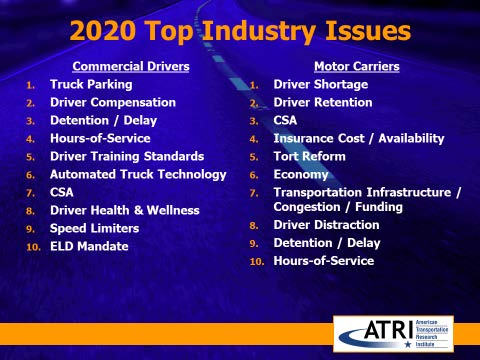
Only a truck driver can understand how the “truck parking” issue can be the single biggest concern drivers face today. The American Transportation Research Institute (ATRI), the not-for-profit research arm of the trucking industry has documented Truck Parking’s rapid climb up ATRI’s Top Industry Issues list for the last 5 years, with the issue reaching #1 during its most recent survey last October. Alternatively, Truck Parking has almost never reached the top of the fleet executive (motor carrier) list – primarily because trucking executives aren’t experiencing the daily frustration of leaving a revenue run earlier and earlier in the day – in hopes of finding some safe place to park.
ATRI has been working for nearly five years on truck parking studies, ranging from truck driver diaries documenting parking challenges, to parking supply and demand analyses, even safety research associated with parking in unauthorized locations.
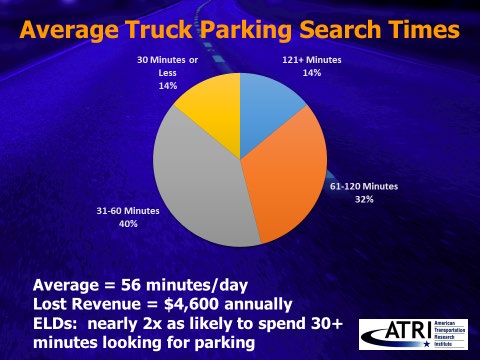
The research is telling… in the good old days, truck drivers could easily find parking at both public rest areas and private truck stops as late as 8 or 9 p.m. Today, if a truck driver isn’t settled in by 5 p.m., he or she might find themselves parked on an unsafe entrance ramp or an empty parking lot five miles off the freeway.
Truck drivers know that parking isn’t just about HOS compliance, although the ELD mandate has made ideal parking much harder to find. ATRI research confirms that the truck parking shortage has dramatically impacted driver pay – to the tune of $4,600 a year. It has also made
time-sensitive staging nearly impossible; many drivers now stage 30-40 miles outside of an urban area, in preparation for early morning pick-ups and deliveries. Early indications are that, as e-commerce continues to increase, free expedited shipping may go the way of the dinosaur.
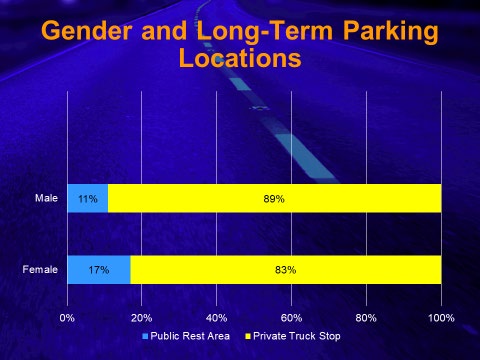
It is well known that truck drivers rely on private truck stops and public rest stops for different reasons. But it is very interesting to note that women drivers differ from male counter-parts in their preferences. ATRI research confirms that women truck drivers favor public rest stops more so than men – primarily due to safety and privacy issues. With the trucking industry aggressively pursuing women drivers as one solution to fixing the truck driver shortage, it is imperative that industry and government work together to ensure that the safety concerns of women drivers are clearly addressed.
There are numerous solutions being proposed for the truck parking crisis, with most requiring new funding resources. The federal fuel tax, which has not been raised since 1993, is the primary source of revenue for the Federal Highway Trust Fund (HTF). Unfortunately, the HTF is expected to run out of money by 2022.
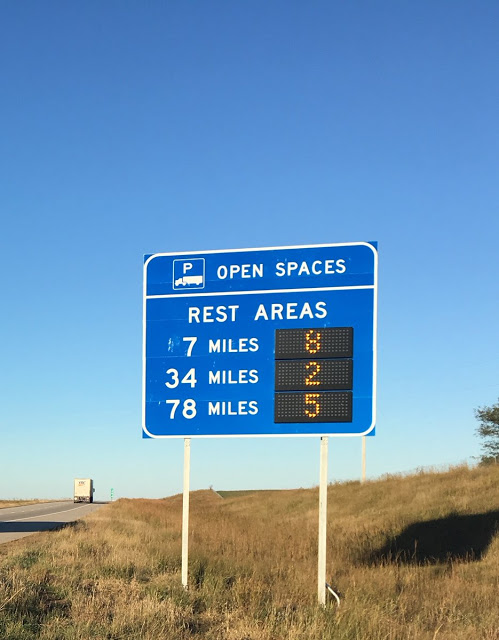 So until Congress passes a new infrastructure bill with new revenues for roads, bridges…and expanded truck parking capacity, the best that state DOTs can do is notify truck drivers of available spaces that exist today. These “real-time truck parking information systems” are springing up everywhere now. While they don’t help with new capacity, they are alerting truck drivers of space availability at both public and private parking locations – long before the driver has to pull off and randomly start searching for a spot.
So until Congress passes a new infrastructure bill with new revenues for roads, bridges…and expanded truck parking capacity, the best that state DOTs can do is notify truck drivers of available spaces that exist today. These “real-time truck parking information systems” are springing up everywhere now. While they don’t help with new capacity, they are alerting truck drivers of space availability at both public and private parking locations – long before the driver has to pull off and randomly start searching for a spot.
While these information systems can be helpful, they also create some confusion, as every state system is slightly different. In early June, ATRI will be releasing new research that provides both state DOTs and the US DOT with recommendations on how to improve and standardize truck parking information systems. ICSA will share those research results with its members.
There is some light at the end of the truck parking crisis tunnel… The American Trucking Associations is aggressively pushing for the creation of a new truck parking funding program within the next U.S. infrastructure bill. If that comes to fruition, the hope is that a dramatic increase in truck parking capacity occurs very soon. Come on Congress, let’s move on truck parking so we can stop where and when we need to!
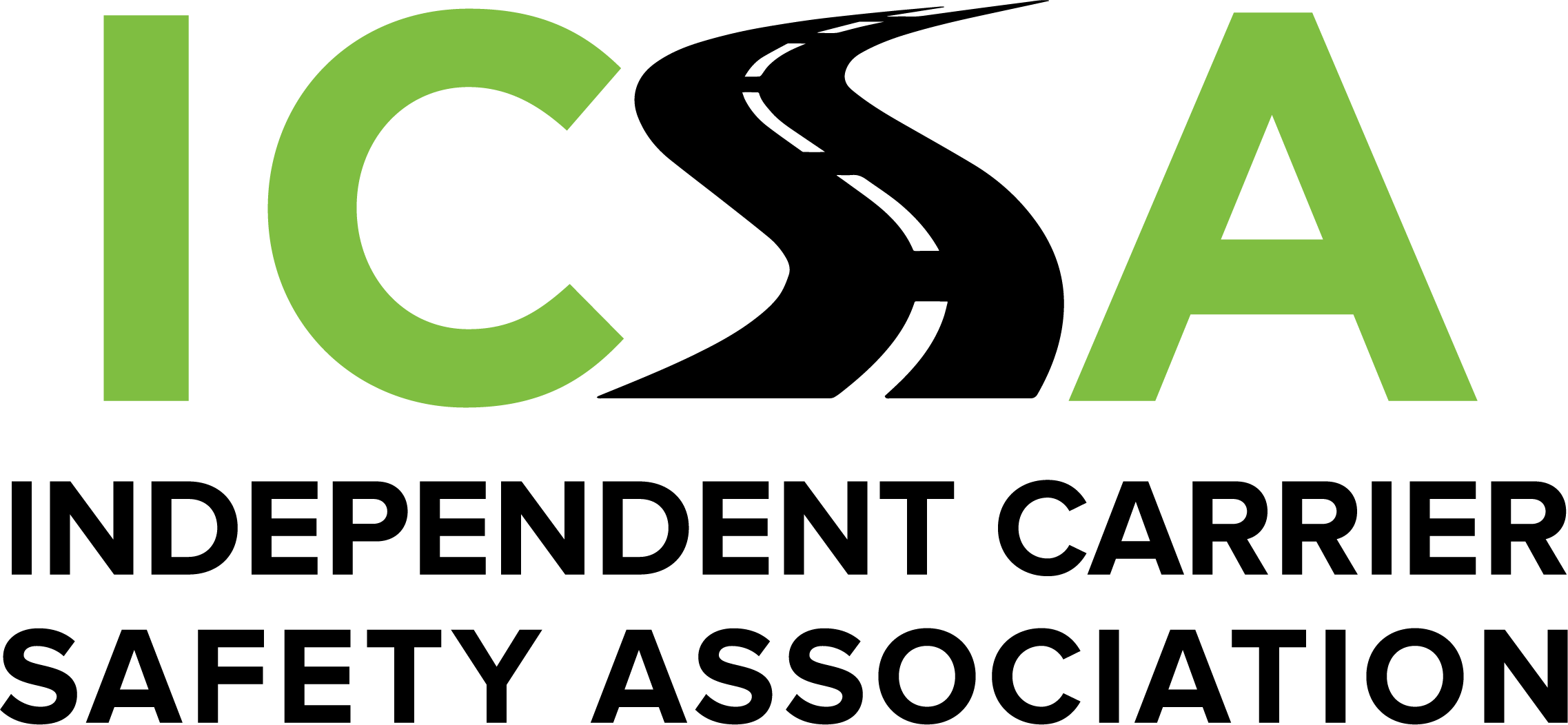





 So until Congress passes a new infrastructure bill with new revenues for roads, bridges…and expanded truck parking capacity, the best that state DOTs can do is notify truck drivers of available spaces that exist today. These “real-time truck parking information systems” are springing up everywhere now. While they don’t help with new capacity, they are alerting truck drivers of space availability at both public and private parking locations – long before the driver has to pull off and randomly start searching for a spot.
So until Congress passes a new infrastructure bill with new revenues for roads, bridges…and expanded truck parking capacity, the best that state DOTs can do is notify truck drivers of available spaces that exist today. These “real-time truck parking information systems” are springing up everywhere now. While they don’t help with new capacity, they are alerting truck drivers of space availability at both public and private parking locations – long before the driver has to pull off and randomly start searching for a spot.